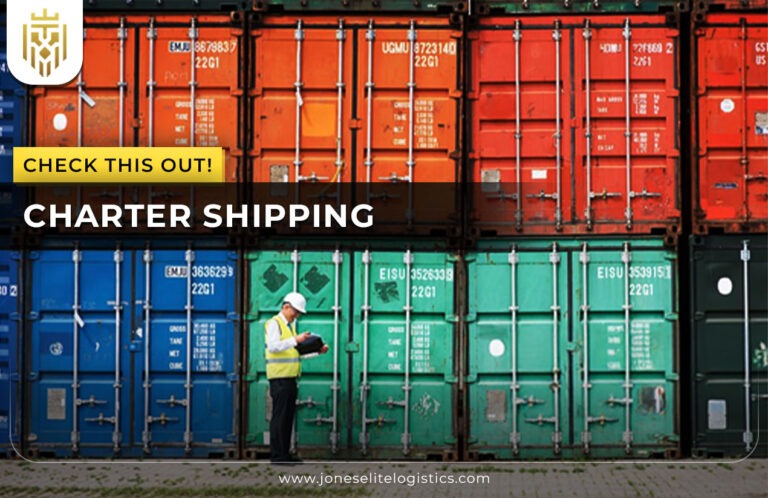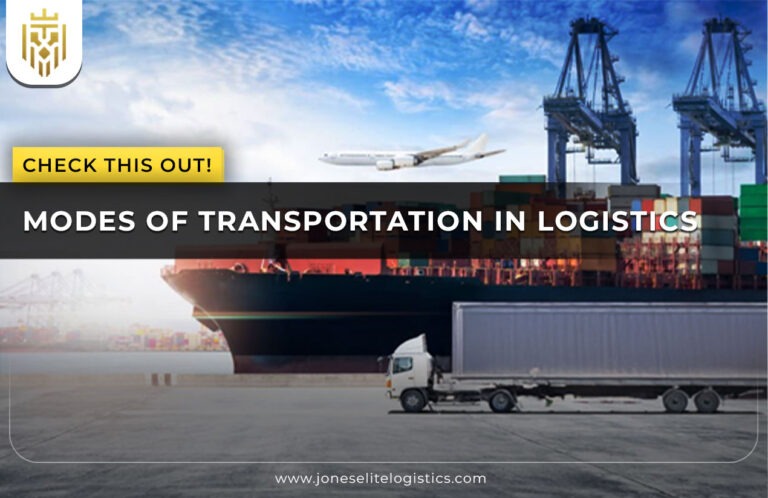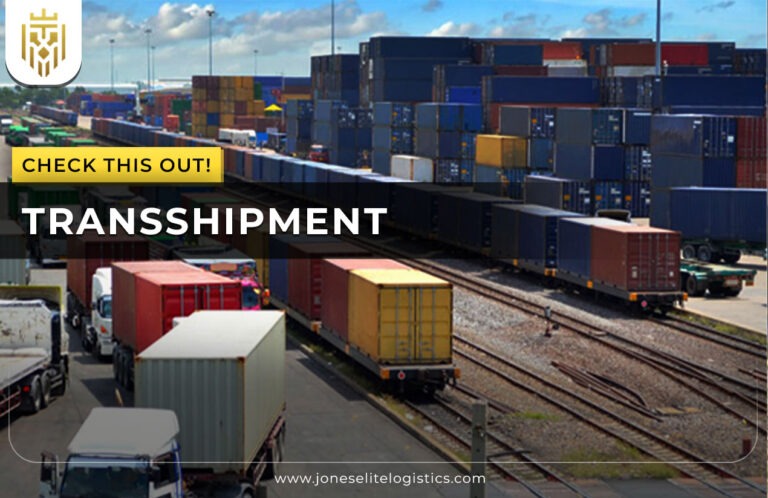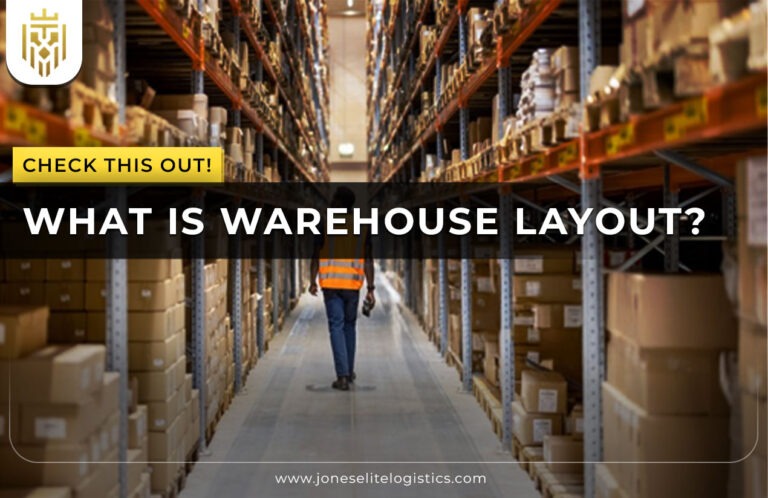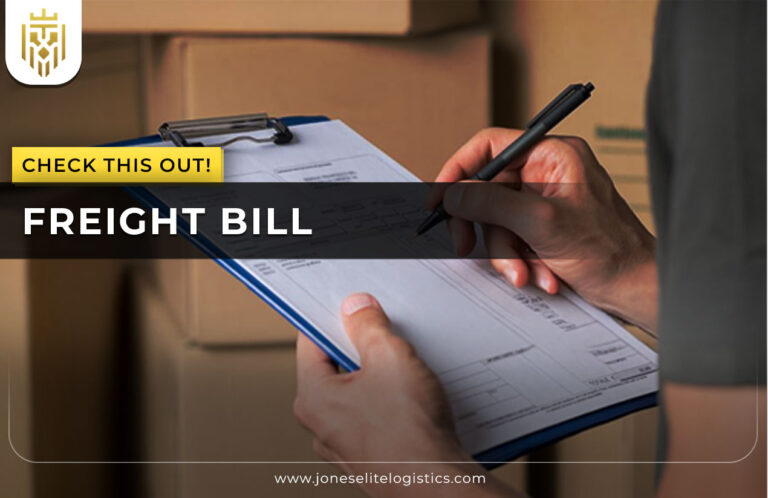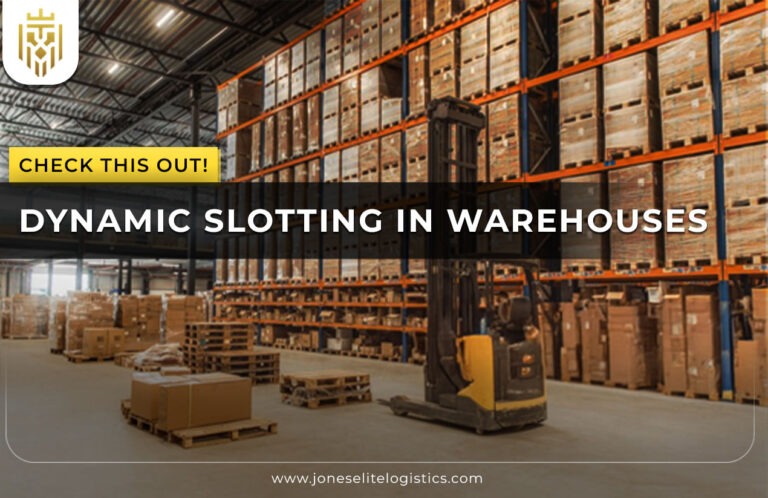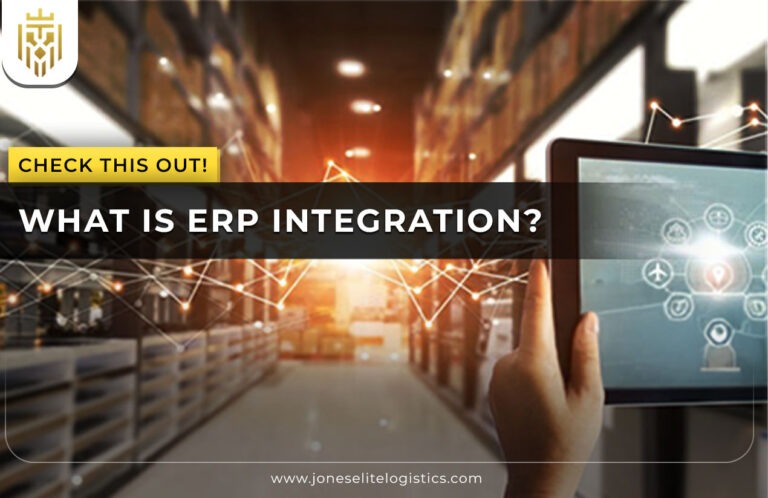Transshipment Meaning
The transshipment meaning can be explained as the process of transferring cargo between vessels in order to arrive at the final destination. It is a vital part of the maritime logistics system, allowing flexibility, savings, and enhanced connectivity across the globe.
How does Transshipment Process work?

Container shipping is an operation consisting of various stages in which the cargo passes through transit ports to the receiver. This guarantees shipments on time and supports bigger shipments as well as streamlines routes, as shipping and logistics management become more efficient across international trade flows and supply chain networks.
Initial Dispatch
This starts with the first dispatch, where goods are sent out of the source point to the nearest port. Transshipment cargo handling cargo may already be tagged cargo, depending on the route planned and the international shipping hub selected to facilitate the easy movement of the cargo.
Arrival at Transshipment Port/Hub
Cargo on arrival at a transshipment hub is introduced to dedicated facilities to carry out cargo transfer activities. In this case goods are sent to their next ship. This step is essential to deliver speed and reliability in trade through efficient port planning, which ensures a minimum delay in trade.
Shipment Unloading & Temporary Storage
As soon as the ships arrive, the cargo is unloaded and could be stored in temporary sites. These storage areas facilitate seamless transshipment of ocean freight operations by minimising congestion, streamlining shipment operations and ensuring goods are transported to a secure place prior to their reload on other vessels that will take them to different destinations.
Customs Verification
Container shipping operations cannot be carried out without customs cheques that provide adherence to the trade regulations and security measures. The move prevents illegitimate transfers, ensures transparency and complies with shipping and logistic management practices that are pivotal to international commerce and controlled global activities.
Transferring to the Next Carrier
Once clearance is done, goods are loaded into a different vessel, aircraft, or truck as per the envisaged route. This stage of cargo transfer operations involves accuracy, synchronisation, and safety measures to avoid injury, delays, or loss and proper movement of the cargo along the chain.
Final Destination Delivery
After cargo is transported to the final port, unloading and delivery of the cargo to the final recipient take place. The safety of cargo, its cost-effectiveness, and the timeliness of delivery at all levels are ensured through efficient transshipment cargo handling, which supports trust in international supply chains and the overall success of deliveries.
What is a Transshipment Port Or Hub?
The transshipment port meaning lays emphasis on ports where cargo is transferred between ships in order to be transported further. Global transshipment centres offer port transshipment services which are fast, efficient and technologically advanced in order to reinforce international trade by connecting the maritime routes.
Need for Transshipment
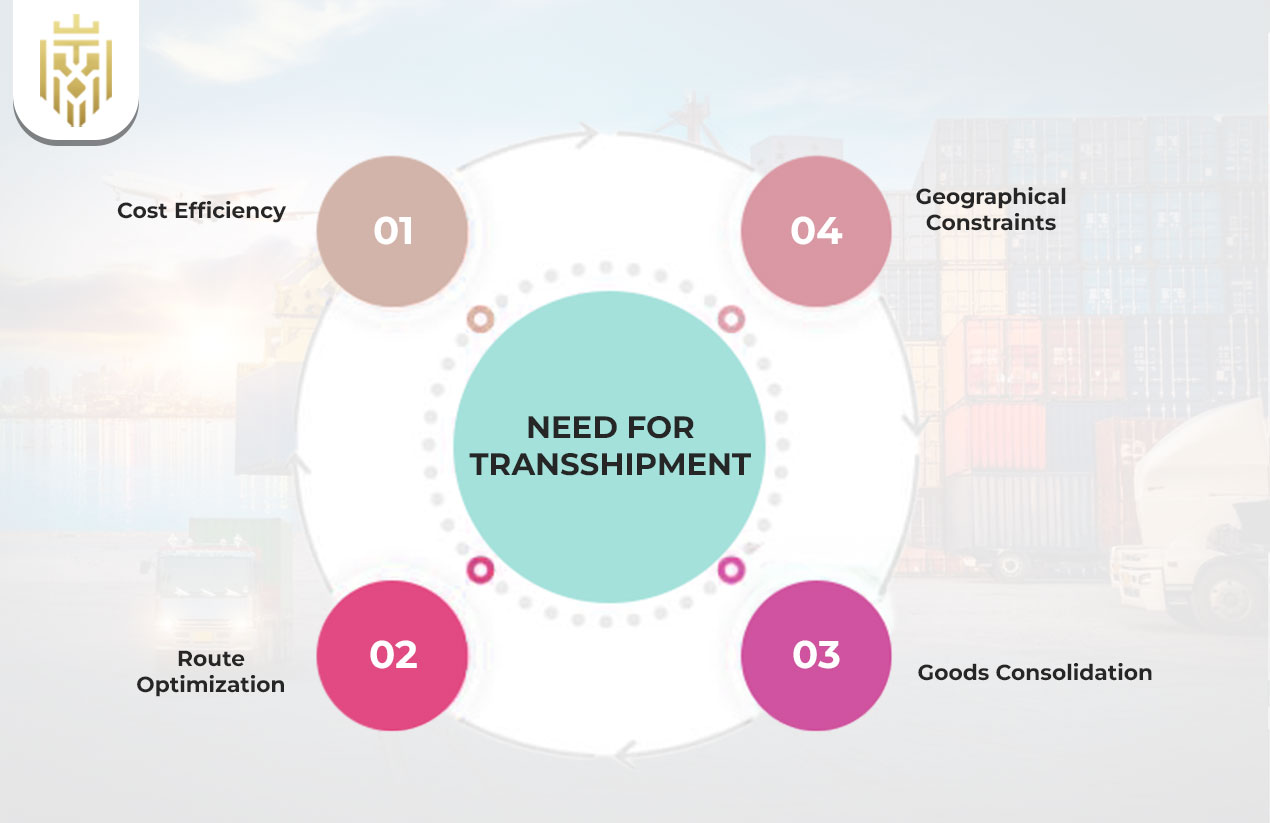
Cost Efficiency
Transshipment plays a critical role in the process of maximising shipping routes, minimising costs, and breaking through natural barriers. It serves as a pillar of the maritime logistics system, which guarantees efficient management of advanced international transfer, supports the development of trade, and maintains the quality of supply chain management in all parts of the world.
Route Optimisation
Companies reduce transportation costs by consolidating shipments in a transshipment hub. This assists in aligning the cost of operations with customer needs; it makes shipping and logistics management more sustainable and offers competitive pricing and efficient trade solutions to the international business and trade forwarding industry.
Goods Consolidation
Transit via an international transshipment centre enables vessels to reduce the number of trips by eliminating non-direct or long routes. This improves the performance of operations, minimises fuel consumption, and promotes the transfer of cargo, which makes global trade more convenient and quick for the companies that rely on the international chain of supply.
Geographical Constraints
Transshipment cargo management allows more than one small load to be represented by a single large one. This lowers the unit costs of transportation and streamlines transshipment of ocean cargo, enabling companies to enter new markets and achieve efficiency in the wider international supply and distribution processes.
Differences between Transshipment & Direct Shipment
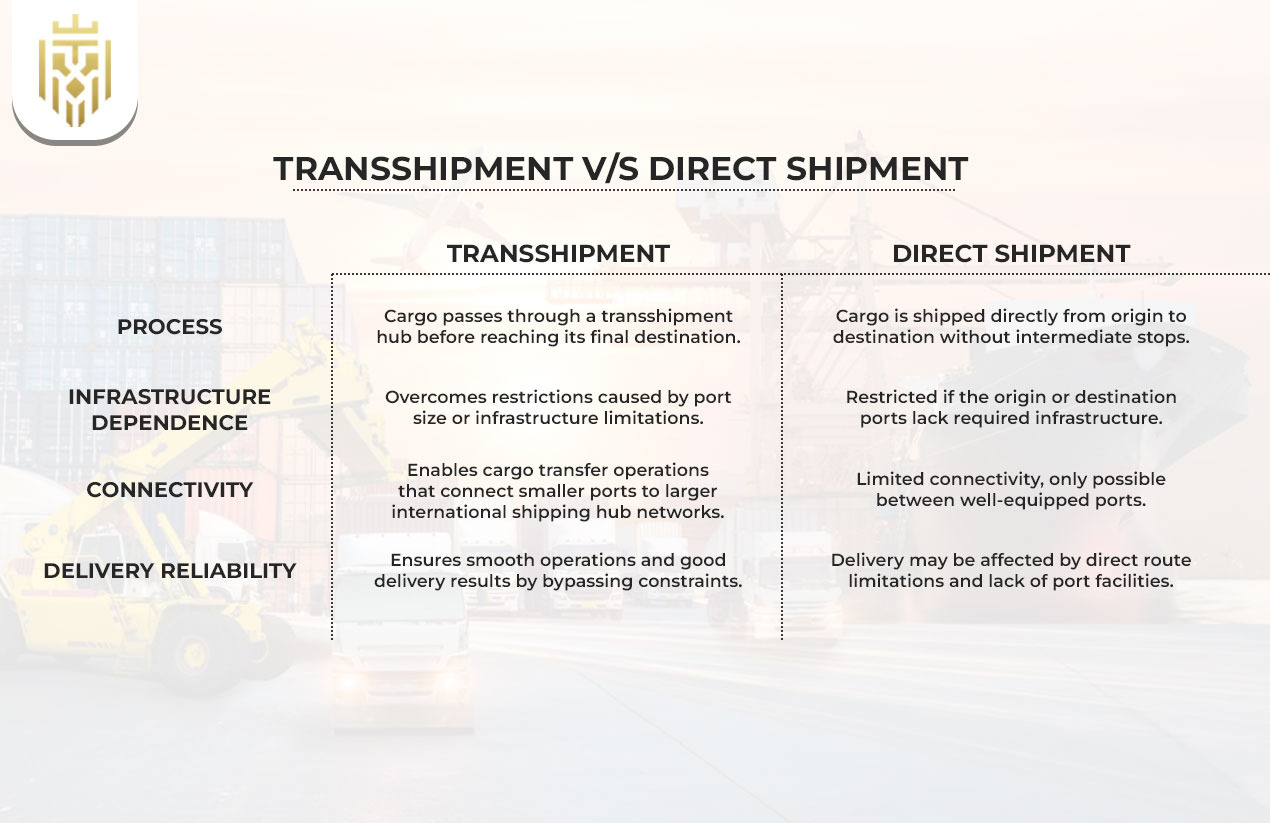
There are also a lot of areas where direct shipping is restricted by size or infrastructure. Bypassing these constraints through a transshipment hub, the cargo transfer operation is guaranteed to run smoothly and connect smaller ports to bigger international shipping hub networks to achieve good delivery results.
Challenges in Transshipment
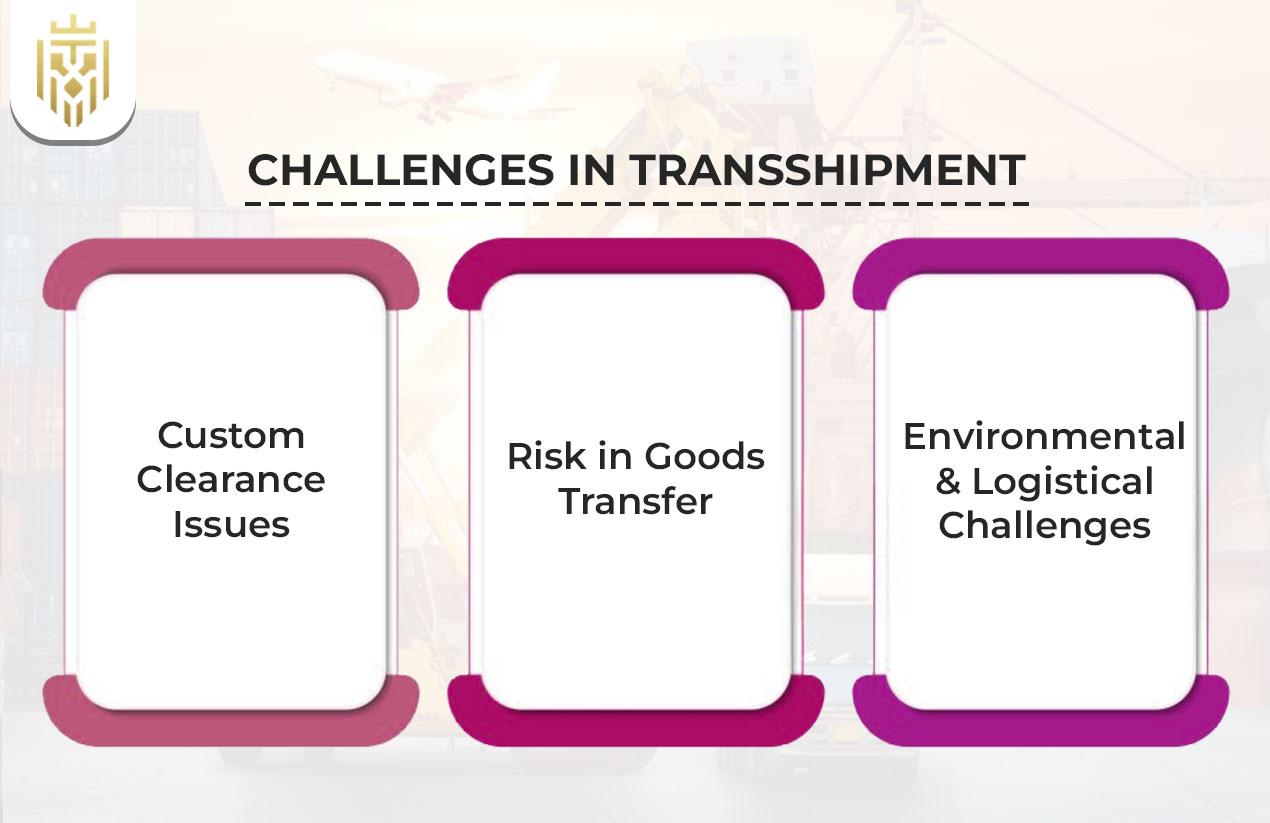
Although transshipment has its benefits, the issues associated with transshipment include customs delays, cargo safety risk, and the environmental aspects. These problems impact shipping and logistics administration, which is why it is crucial to implement sophisticated solutions that remain efficient along the whole transportation chain.
Custom Clearance Issues
Delays during customs are typical of transshipment cargo processing and can add time to transit. Various countries possess various rules, which must be properly planned, documented, and followed. This helps in free flow and avoids fines that might hinder the entire process of container shipping worldwide.
Risk in Goods Transfer
Movement of goods across carriers in a transshipment hub creates a greater possibility of being damaged, lost, or stolen. Cargo transfer operation becomes safer and more reliable because proper safety measures and advanced monitoring systems minimise the vulnerabilities, which are a significant concern to shippers and consignees across the globe.
Environmental & Logistical Challenges
Ocean freight transshipment can be affected by weather factors like unpredictable weather and environmental regulations. These factors, in combination with logistical complexities, demand flexibility and high coordination in the maritime logistics network in order to guarantee a smooth flow of trade and a viable global shipping business.
How to Track Transshipments?
Transshipment tracking provides business and customer visibility and reliability. High-end monitoring devices and the services of skilled freight forwarders enhance the transparency of the maritime logistics network and reinforce shipping and logistics management with real-time information on the location of shipments and delivery status.
Electronic Tracking
The transshipment cargo handling within and among the carriers can be tracked through electronic systems that allow businesses to follow the cargo. This enhances confidence in supply chain operations, eases monitoring movement, discovers possible delays, and enhances efficiency in the international trade and logistics systems.
Communication
Effective communication among carriers, ports and customers facilitates the process of transferring cargo. Timely updates lower additional confusion, reduce the timespan to address problems, and provide transparency, which makes business operations within the broader shipping and logistics management setting smoother.
Using Freight Forwarder
By engaging a freight forwarder, conducting transshipment becomes easier as he/she coordinates different carriers, manages paperwork, and implements compliance. These specialists streamline marine logistics, providing skills that can ensure that international deliveries run smoothly and minimise the risks to companies that are involved in international trading.
FAQs
1. What is a Transshipment Port?
A transshipment port is the intermediate location where cargo is loaded onto and off vessels, facilitating the maritime logistics network through efficient transshipment cargo movements and connecting the world.
2. Does transshipment affect delivery time for cargo?
Yes, transshipment will slightly increase delivery time because of cargo transfer operations and customs. But it also provides wider access to routes, and international trade can be easier in the process of container shipping.
3. Which Businesses use Transshipment?
Manufacturers, retailers, and exporters, along with other businesses with international shipping hub trade, depend on transshipment cargo management to achieve efficiency, cost reduction and consistent global market opportunity via linked maritime transportation channels.
4. Can transshipment reduce shipping costs?
Yes, transshipment saves money by consolidation, efficient routes and utilisation of port transshipment services. This makes ocean freight transshipment economical and shipping and logistics management more efficient in the global trading activities.

